(Revelation 2-3) Who Are the Seven Churches?
Posted Jun 24, 2021 by Kevin J. Mullins in Questions Concerning Bible Prophecy
If you were to study the book of Revelation you would notice that each chapter is linked to the other. The correct title of the book is The Revelation (singular). It is not meant to be the book of Revelations (plural), but is one complete revelation. Each chapter builds on the other. In fact, like we have seen with the book of Daniel so far, the chapters actually overlap each other adding further detail as the book progresses.
In verse 10 of chapter 1 we read that John was in the Spirit when he heard a voice behind him. The voice tells John to write seven letters and send one to each of the seven churches in Asia (verse 11). After hearing this John turns around to see the person speaking to him and sees that it is Jesus Himself dressed as a High Priest. Notice John’s description of Jesus:
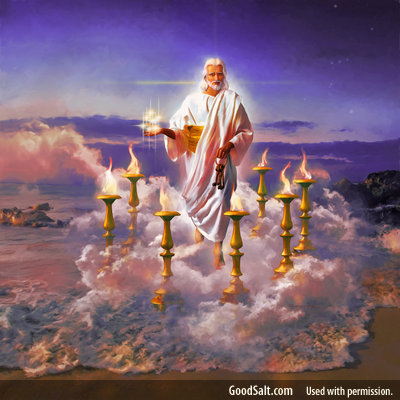 “And I turned to see the voice that spake with me. And being turned, I saw seven golden candlesticks; And in the midst of the seven candlesticks one like unto the Son of man, clothed with a garment down to the foot, and girt about the paps (chest) with a golden girdle (band).” (Revelation 1:12, 13)
“And I turned to see the voice that spake with me. And being turned, I saw seven golden candlesticks; And in the midst of the seven candlesticks one like unto the Son of man, clothed with a garment down to the foot, and girt about the paps (chest) with a golden girdle (band).” (Revelation 1:12, 13)
The Greek word used to describe the garment Jesus is wearing is ποδήρης (podérés which literally means “reaching to the feet.” This same Greek word is used in the first Greek translation of the Old Testament (called the Septuagint) to describe the robe worn by the high priest as he performs his duties inside the first apartment of the earthly sanctuary (Exodus 28:4). We have previously learned that one of the pieces of furniture inside the first apartment of the sanctuary (called the Holy Place) was a seven-branched golden Menorah which John sees Jesus standing in the midst of. Thus John is witnessing Jesus’ role as our High Priest as He ministers in a heavenly sanctuary. Remember, Paul wrote that “... we have such a High Priest ... a Minister of the sanctuary and of the true tabernacle which the Lord pitched and not man” (Hebrews 8:1, 2).
Another piece of furniture inside the first apartment of the ancient sanctuary was the golden altar of incense which was placed just before the veil which separated the two rooms of the sanctuary. Just before the seven trumpets are blown in the book of Revelation we read this scene:
“And I saw the seven angels which stood before God; and to them were given seven trumpets. And another angel came and stood at the altar, having a golden censer; and there was given unto him much incense, that he should offer it with the prayers of all saints upon the golden altar which was before the throne. And the smoke of the incense, which came with the prayers of the saints, ascended up before God out of the angel's hand.” (Revelation 8:2-4)
Beyond the veil in the ancient sanctuary was a smaller room called the Holy of Holies which contained only one piece of furniture - the Ark of the Covenant. When the seventh trumpet is blown in Revelation 11:15, John says he hears a voice say it was “the time of the dead, that they should be judged” (verse 18) and then writes the following in verse 19: “Then the temple of God was opened in heaven, and the ark of His covenant was seen in His temple.” In our previous studies we have seen that this is a clear connection to the second apartment of the sanctuary where once a year, on Yom Kippur, the high priest would enter and perform a cleansing ceremony which the Jews considered was a time of judgment. We must conclude then that from the seven churches to the seventh trumpet the book of Revelation is describing Jesus’ ministry inside the first apartment of the heavenly sanctuary until He moves into the Holy of Holies to perform a work of judgement, or cleansing the sanctuary). Therefore, the book of Revelation was actually written to reveal to us what Jesus has been doing for us ever since He ascended into heaven.
Jesus came to John personally to give the Revelation. Keep in mind that this is around 95 A.D., nearly 64 years after Jesus died and ascended into heaven. The book of Revelation is from, and about Jesus. Verse 1 of chapter 1 also states that this Revelation would show us “things which must shortly come to pass.” Thus these things would shortly take place after 95 A.D. How sad it is when modern teachers say the events in the book of Revelation do not take place until after the rapture of the church. It has been nearly 2,000 years since the book of Revelation was written. Clearly when John writes that the events in the book of Revelation would “shortly come to pass”, he does not mean 2,000 years after!
As we will see, these things or events that would soon take place after 95 A.D. all effect God’s people. In other words, what Jesus does in the sanctuary above, greatly affects what happens here on this earth. Satan, striving to draw our attention away from Jesus’ High Priestly ministry above, directs our attention to only focus on the events down here on this earth. Correctly understood, to those of us living at this present age, the book of Revelation is a book mostly of church history with only a few future events left to be played out. To John it is church history in advance.
The Seven Churches
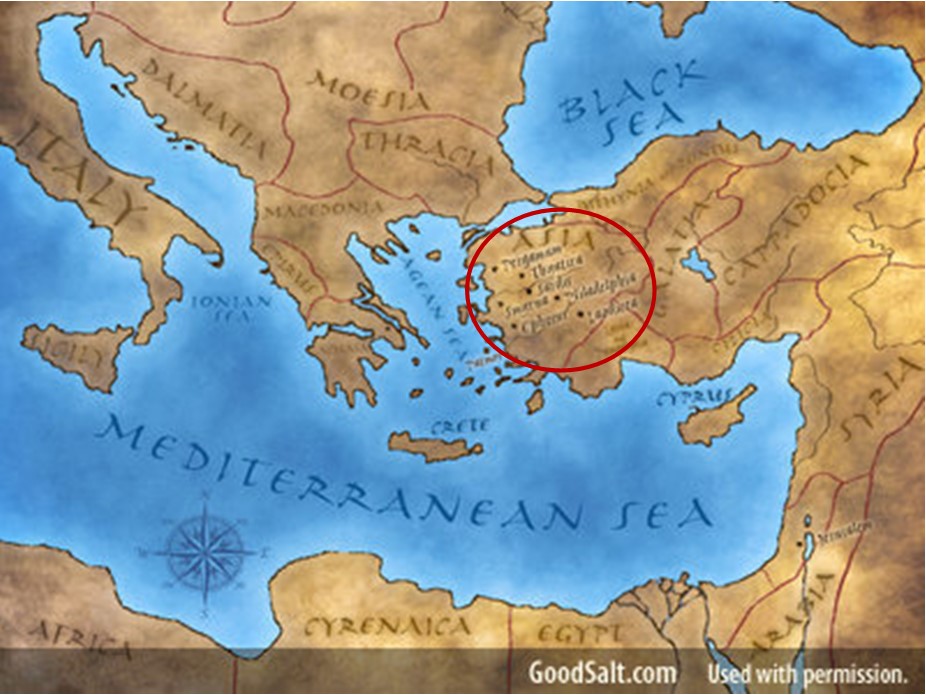 After John sees his Friend and Savior, he is commissioned to write seven letters and send them to seven churches which are in Asia. Although these seven churches have a local application for these churches of Asia, they also have a world-wide spiritual application for us. These seven churches represent seven eras of the Christian church from the time of Christ to the Second Coming. Many commentators as far back as the second and third centuries believed these seven letters are prophetic and apply to the seven ages of Christian history.
After John sees his Friend and Savior, he is commissioned to write seven letters and send them to seven churches which are in Asia. Although these seven churches have a local application for these churches of Asia, they also have a world-wide spiritual application for us. These seven churches represent seven eras of the Christian church from the time of Christ to the Second Coming. Many commentators as far back as the second and third centuries believed these seven letters are prophetic and apply to the seven ages of Christian history.
One reason for this is that there were more than seven churches in Asia. One church not mentioned in the Revelation was the church of Colosse which Paul before had written to in his letter to the Colossians. Other churches in Asia would be Miletus, Troas Pontus, Galatia, Cappadocia, and Bithynia. Why was John not to write letters to these churches as well? Clearly the seven letters are for these churches just as they are for us today. John describes events that would begin to take place in his day as well as events to take place hundreds of years after. The entire book of Revelation was to be sent to seven churches in Asia (Revelation 1:11). If the prophecies were just for these seven churches alone, why then does John describe events that would take place hundreds of years later?
Obviously these seven churches are also meant to be understood prophetically. The number seven, in Scripture, denotes fullness or completeness. God created the earth in six days and rested on the seventh. Thus the seven churches would represent seven complete periods of the Christian church. On page 344 in his book, Daniel and the Revelation, Uriah Smith writes:
“Why, then, were only seven particular churches chosen that are mentioned? For the reason, doubtless, that in the names of these churches, according to the definitions of the words, are brought out the religious features of those periods of the gospel age which they respectfully were to represent.”
Therefore, in order to properly study these seven churches we must know and understand what their names means. By doing this we can clearly see what period of the Christian age they represent.
The Church of Ephesus
“Unto the angel (minister/leader) of the church of Ephesus write; These things saith he that holdeth the seven stars in His right hand, who walketh in the midst of the seven golden candlesticks; I know thy works, and thy labour, and thy patience, and how thou canst not bear them which are evil: and thou hast tried them which say they are apostles, and are not, and hast found them liars: And hast borne, and hast patience, and for My name's sake hast laboured, and hast not fainted. Nevertheless I have somewhat against thee, because thou hast left thy first love. Remember therefore from whence thou art fallen, and repent, and do the first works; or else I will come unto thee quickly, and will remove thy candlestick out of his place, except thou repent. But this thou hast, that thou hatest the deeds of the Nicolaitans, which I also hate. He that hath an ear, let him hear what the Spirit saith unto the churches; To him that overcometh will I give to eat of the tree of life, which is in the midst of the paradise of God. (Revelation 2:1-7)
The first church that John is to write to is the church of Ephesus. The meaning of the word Ephesus is “desirable.” The city of Ephesus was in a very desirable location. Jesus commended this church for their great labor, patience, and being able to discern who was a true apostle and who was not. John begins the letter by describing the seven stars in Jesus’ hand and the seven golden candlesticks. Later in the letter he warns this church that they have left their first love and, if they did not repent, this would result in their lampstand (the light of truth) being removed. Removing ones lampstand means that light, or their witness, would be removed because of the absence of Jesus’ presence among them; for He has declared, “I am the light of the world: he that followeth Me shall not walk in darkness, but shall have the light of life.” (John 8:12). With the light of His presence in us, we become lights to the word:
“Ye are the light of the world. A city that is set on an hill cannot be hid. Neither do men light a candle, and put it under a bushel, but on a candlestick; and it giveth light unto all that are in the house. Let your light so shine before men, that they may see your good works, and glorify your Father which is in heaven.” (Matthew 5:14-16)
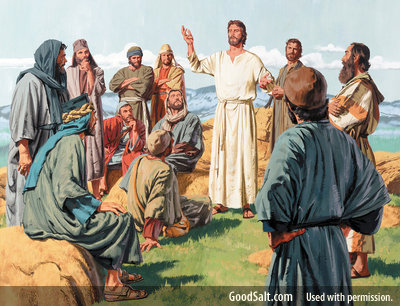 This letter represents a time when Christianity was at its purest. Jesus said these people “hast borne, and hast patience, and for My name's sake hast laboured, and hast not fainted.” (Revelation 2:3). The characteristics of this single church reflect the characteristics of the whole era of the apostles when the gospel spread like wildfire. The act of their great labor alone is shown by the way they quickly spread the gospel to all parts of the inhabited earth. Through the love for their Savior, they carried the lampstand to light the way for all those in darkness. The apostle Paul wrote to the early believers saying:
This letter represents a time when Christianity was at its purest. Jesus said these people “hast borne, and hast patience, and for My name's sake hast laboured, and hast not fainted.” (Revelation 2:3). The characteristics of this single church reflect the characteristics of the whole era of the apostles when the gospel spread like wildfire. The act of their great labor alone is shown by the way they quickly spread the gospel to all parts of the inhabited earth. Through the love for their Savior, they carried the lampstand to light the way for all those in darkness. The apostle Paul wrote to the early believers saying:
“If ye continue in the faith grounded and settled, and be not moved away from the hope of the gospel, which ye have heard, and which was preached to every creature which is under heaven; whereof I Paul am made a minister.” (Colossians 1:23)
Paul gave council not to turn away from the gospel that was first preached by him and his companions. This greatly parallels the warning given by Jesus that some have left “your first love.” The foundation of the gospel (Good News) which Jesus taught concerning His Father’s true character, had been passed down through His disciples. The disciples are called the foundation of the gospel with Jesus being the chief cornerstone (see Ephesians 2:20). Unfortunately, as time went on, the people began to leave or pervert their love for the gospel. In another letter Paul warned, “For the mystery of iniquity doth already work.” (2 Thessalonians 2:7).
Iniquity (Lawlessness) was beginning to show its face among the early believers, thus the warning that Jesus gives against the Nicolaitans in verse 6 becomes clear. The Nicolaitans were a group of people who emphasized freedom to the extent that its members taught they did not need to keep God’s Law. Jesus commended His early followers for hating (turning away from) the deeds of the Nicolaitans. The early followers of Jesus repeatedly taught us that to be saved by grace alone means that we receive divine power to be obedient to God’s Law:
“By whom (Christ) we have received grace and apostleship, for obedience to the faith among all nations, for His name (character).” (Romans 1:5)
“For the grace of God that bringeth salvation hath appeared to all men, Teaching us that, denying ungodliness and worldly lusts, we should live soberly, righteously, and godly, in this present world.” (Titus 2:11, 12)
Faith, which is the acceptance of divine truth, will always lead us submissively towards obedience to God’s will:
“Do we then make void the law through faith? God forbid: yea, we establish the Law...” (Romans 3:31)
Why is this? Because the faith that we will possess does not originate with us, but from Jesus. He alone is the “author and perfecter of faith” (Hebrews 12:2, Young’s Literal Translation); for He is the only Being to have ever practiced faith perfectly. We are to live by His unfailing faith which always did those things that are pleasing to His Father (John 8:29).
“I am crucified with Christ: nevertheless I live; yet not I, but Christ liveth in me: and the life which I now live in the flesh I live by the faith OF the Son of God, who loved me, and gave Himself for me.” (Galatians 2:20)
“Here is the patience of the saints: here are they that keep the commandments of God, and the faith OF Jesus.” (Revelation 14:12)
How was He able to do those those things? He always lived in submission to every word that proceeds from the mouth of God (Matthew 4:4).
The apostles teach us that, even though it is impossible to be saved by keeping the Law, we keep it because we are in love with the One who does save us:
“If ye love Me, keep My commandments.” (John 14:15)
“Love worketh no ill to his neighbour: therefore love is the fulfilling of the Law.” (Romans 13:10)
Thus we see clearly, that according to Paul and Jesus, there would be a turning away from the simple truths that Jesus taught His followers. Paul, trying to settle all confusion, declared, “For I know this, that after my departing shall grievous wolves enter in among you, not sparing the flock. Also of your own selves shall men arise, speaking perverse things, to draw away disciples after them.” (Acts 20:29, 30).
The prophetic letter to the church of Ephesus therefore represents the Christian church in its infancy, or the first century A.D. It spans from the death of Jesus to the turn of the second century (31 A.D. - 100 A.D.). Thus the church of Ephesus represents the “Era of Apostles.” It is not a coincidence that Jesus addresses this church as He “who walketh in the midst of the seven golden candlesticks.”
“It is significant that the candlestick was made up of seventy parts, or ornaments, including the base. (see Exodus 25:31-40.) During His ministry on earth Christ ‘appointed other seventy also [besides the twelve disciples], and sent them two and two before His face into every city and place, whither He Himself would come’ (Luke 10:1). After their first mission ‘the seventy returned again with joy, saying, Lord even the devils are subject unto us through Thy name’ (Luke 10:17). As children of the Light they went forth as light bearers to those in darkness. The candlestick with its seventy ornaments of gold fitly represents that first evangelistic army of gospel workers, as well as all those who would after them evangelize the world. Every Christian soldier is born into God’s kingdom as a living missionary to all within his sphere of influence.” (Ty Gibson, The Path of the Just, p. 53)
The Church of Smyrna
“And unto the angel (minister/leader) of the church in Smyrna write; These things saith the First and the Last, which was dead, and is alive; I know thy works, and tribulation, and poverty, (but thou art rich) and I know the blasphemy of them which say they are Jews, and are not, but are the synagogue of Satan. Fear none of those things which thou shalt suffer: behold, the devil shall cast some of you into prison, that ye may be tried; and ye shall have tribulation ten days: be thou faithful unto death, and I will give thee a crown of life. He that hath an ear, let him hear what the Spirit saith unto the churches; He that overcometh shall not be hurt of the second death.” (Revelation 2:8-11)
The second church John is to write to is the church of Smyrna. The meaning of the word Smyrna is “Sweet Smelling When Crushed.” This term of “sweet smelling” refers to some kind of sacrifice – something being crushed. After Noah left the ark and began to walk again on dry ground he built an altar and there offered some of the animals that he had taken with him as burnt offerings. Scripture says, “And the Lord smelled a soothing aroma ...” (Genesis 8:20, 21, New King James). Clearly God is not smelling this sacrificial aroma as an appeasement, to satisfy His anger and wrath as a pagan god is believed to. God is never joyful to see or smell burnt flesh (Psalm 40:6). Paul clarifies this when he wrote, “And walk in love, as Christ also has loved us and given Himself for us, an offering and sacrifice to God for a sweet-smelling aroma.” (Ephesians 5:2, New King James). There was nothing to literally smell as Christ died upon the cross. The aroma that God was pleased at was Christ’s sacrificial love for us. By dying on the cross He beautifully revealed God’s character, showing us that He would rather be killed, than to kill.
“Deliver me from bloodguiltiness (the guilt of bloodshed), O God, Thou God of my salvation: and my tongue shall sing aloud of Thy righteousness. O Lord, open Thou my lips; and my mouth shall show forth Thy praise. For thou desirest not sacrifice; else would I give it: thou delightest not in burnt offering. The sacrifices of God are a broken spirit: a broken and a contrite heart, O God, Thou wilt not despise. Do good in Thy good pleasure unto Zion: build thou the walls of Jerusalem. Then shalt thou be pleased with the sacrifices of righteousness, with burnt offering and whole burnt offering: then shall they offer bullocks upon Thine altar.” (Psalm 51:14-19)
The sweet smelling aroma God is soothed by is “a broken and a contrite (humbled/submissive) heart.” Knowing God “delightest not in burnt offering”, we are to allow Jesus to remove the “sacrifice and oblation” mindset from us (Daniel 9:27). In the Psalm above, David states the setting here is after the rebuilding of “the walls of Jerusalem.” In our previous study we learned that Daniel prophesied that the Messiah would arrive 69 prophetic weeks after the decree to “restore and rebuild Jerusalem ... the street shall be built again, and the wall, even in troublous times.” (Daniel 9:25). After this, the Messiah would “confirm (strengthen) the covenant with many for one week [cf. Matt. 26:27-28; Rom. 15:8] and in the midst of the week He shall cause the sacrifice and the oblation to cease” from our mindset (verse 27). It is because of our Savior’s sacrifice when David’s words, “Then shalt Thou be pleased with sacrifices of righteousness”, will come to pass.
Take note how David in his Psalm is connecting things together. He says, God is “pleased with the sacrifices of righteousness” connecting this to “burnt offering and whole burnt offering.” Then he adds, “then shall they offer bullocks upon Thine altar.” This can be confusing, but he is connecting the blood of bulls with sacrifices of righteousness, which he connects with, “my tongue shall sing aloud of Thy righteousness. O Lord, open Thou my lips; and my mouth shall show forth Thy praise.” How do we know this?
“Take with you words, and return unto the LORD: say unto Him, Take away all iniquity, and accept that which is good: so will we render as bullocks the offering of our lips.” (English Revised Version)
The bulls we offer are the bulls of our lips. We offer Him our lips in sacrifices in order to sing and speak praises unto His name (character). Paul, referring to this writes:
“By Him therefore let us offer the sacrifice of praise to God continually, that is, the fruit of our lips giving thanks to His name. But to do good and to communicate forget not: for with such sacrifices God is well pleased.” (Hebrews 13:15, 16)
And Peter writes:
“Therefore, laying aside all malice, all deceit, hypocrisy, envy, and all evil speaking, as newborn babes, desire the pure milk of the word, that you may grow thereby, if indeed you have tasted that the Lord is gracious. Coming to Him as to a living stone, rejected indeed by men, but chosen by God and precious, you also, as living stones, are being built up a spiritual house, a holy priesthood, to offer up spiritual sacrifices acceptable to God through Jesus Christ.” (1 Peter 2:1-5)
Thus it was these types of “sacrifices” that were being made in the time period of the church of Smyrna which were a sweet smelling aroma unto God. They took heed to Paul counsel:
“I beseech you therefore, brethren, by the mercies of God, that ye present your bodies a living sacrifice, holy, acceptable unto God, which is your reasonable service.” (Romans 12:1)
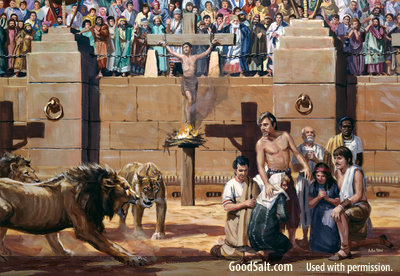 This time period is non-other than the time period just following the first century. During the second century the early Christians were greatly persecuted. Jesus said they would face “tribulation” (Revelation 2:9) and that they would be “faithful unto death” (verse 10). The act of sacrificing their own lives for the gospel was like a “sweet smelling aroma” to God. This is why Jesus writes to this church as being “the First and the last, which was dead, and is alive.” This was to comfort His people who would receive tribulation and death.
This time period is non-other than the time period just following the first century. During the second century the early Christians were greatly persecuted. Jesus said they would face “tribulation” (Revelation 2:9) and that they would be “faithful unto death” (verse 10). The act of sacrificing their own lives for the gospel was like a “sweet smelling aroma” to God. This is why Jesus writes to this church as being “the First and the last, which was dead, and is alive.” This was to comfort His people who would receive tribulation and death.
When Jesus warns about the people who claim they are “Jews, and are not, but are the synagogue of Satan” (verse 9), He is referring to those who claim to be loyal to God, but are not. This is how the Remedy Bible paraphrases it:
“I know about your suffering and poverty, but in reality, you are incredibly rich in what heaven values! I know that you have been misrepresented by those who claim to be loyal to God but really are not; they have enthroned Satan in their hearts–their spirit temples.”
Therefore, Jesus is warning that some people will claim to be true followers of Christ, but will actually be teaching the doctrines of Satan. A false religion would be set up all in the name of Jesus and Satan would take his seat in our hearts – our soul-temples, just as Paul forewarned:
“Let no man deceive you by any means: for that day (the second coming of Christ) shall not come, except there come a falling away first, and that man of sin be revealed, the son of perdition; Who opposeth and exalteth himself above all that is called God, or that is worshipped; so that he as God sitteth in the temple of God, showing himself that he is God.” (2 Thessalonians 2:3, 4)
What temple is Paul referring to?
“And what agreement hath the temple of God with idols? for ye are the temple of the living God; as God hath said, I will dwell in them, and walk in them; and I will be their God, and they shall be My people.” (2 Corinthians 6:16)
And please remember, we have previously learned that Paul is here quoting from the book of Ezekiel where Ezekiel prophesied of a rebuilt temple. Compare the following bold type with the underlined words above:
“Moreover I will make a covenant of peace with them; it shall be an everlasting covenant with them: and I will place them, and multiply them, and will set My sanctuary in the midst of them for evermore. My tabernacle also shall be with them: yea, I will be their God, and they shall be My people. And the heathen shall know that I the LORD do sanctify Israel, when My sanctuary shall be in the midst of them for evermore.” (Ezekiel 37:26-28)
We have learned from our studies on Daniel chapters 7 and 8 that this history is exactly what happened when we study the second, third and fourth centuries. Although pagan philosophy was starting to be “taken up” (incorporated) and labelled “Christian” by the Church of Rome, the true followers of Jesus refused to give in to the compromise and they were greatly persecuted for their reluctance.
Jesus even said that the severest time of persecution would last for “ten days” (verse 10). But remember, we have learned that a day in Bible prophecy represents a full year, thus the “ten days” actually represent a full ten years. It is of no coincidence that the worst time of persecution for these faithful people of God lasted exactly ten years (303 A.D. - 313 A.D.). Thus the church of Smyrna represents the “Era of Persecution.”
The Church of Pergamos
“And to the angel (minister/leader) of the church in Pergamos write; These things saith He which hath the sharp sword with two edges; I know thy works, and where thou dwellest, even where Satan's seat is: and thou holdest fast My name, and hast not denied my faith, even in those days wherein Antipas was my faithful martyr, who was slain among you, where Satan dwelleth. But I have a few things against thee, because thou hast there them that hold the doctrine of Balaam, who taught Balac to cast a stumblingblock before the children of Israel, to eat things sacrificed unto idols, and to commit fornication. So hast thou also them that hold the doctrine of the Nicolaitans, which thing I hate. Repent; or else I will come unto thee quickly, and will fight against them with the sword of My mouth. He that hath an ear, let him hear what the Spirit saith unto the churches; To him that overcometh will I give to eat of the hidden manna, and will give him a white stone, and in the stone a new name written, which no man knoweth saving he that receiveth it.” (Revelation 2:12-17)
The third church that John is to write to is the church of Pergamos. The meaning of the word Pergamos is “height or elevated power.” This church is perceived as elevating itself. Jesus also warned the church of Pergamos that they are located at “Satan’s seat” (Revelation 2:13). It has always been Satan’s goal to be worshiped like God. The prophet Isaiah speaks of this when he quotes God speaking to Lucifer (Satan):
“How art thou fallen from heaven, O Lucifer, son of the morning! how art thou cut down to the ground, which didst weaken the nations! For thou hast said in thine heart, I will ascend into heaven, I will exalt my throne above the stars of God: I will sit also upon the mount of the congregation, in the sides of the north: I will ascend above the heights of the clouds; I will be like the most High.” (Isaiah 14:12-14)
Satan, unable to destroy the Christian church during the era of persecution, began to corrupt it by bringing in pagan doctrines. The religion of paganism is founded in idolatry which is the setting-up of falsehood in the place of truth. We have previously learned that Daniel and Jesus spoke of it as “the abomination of desolation.” Satan has been at work on these deceptions ever since the Garden of Eden. He began to formalize these deceptions during the time of ancient Babylon. By these deceptions he would slowly and quietly sweep them under the door of the Christian church.
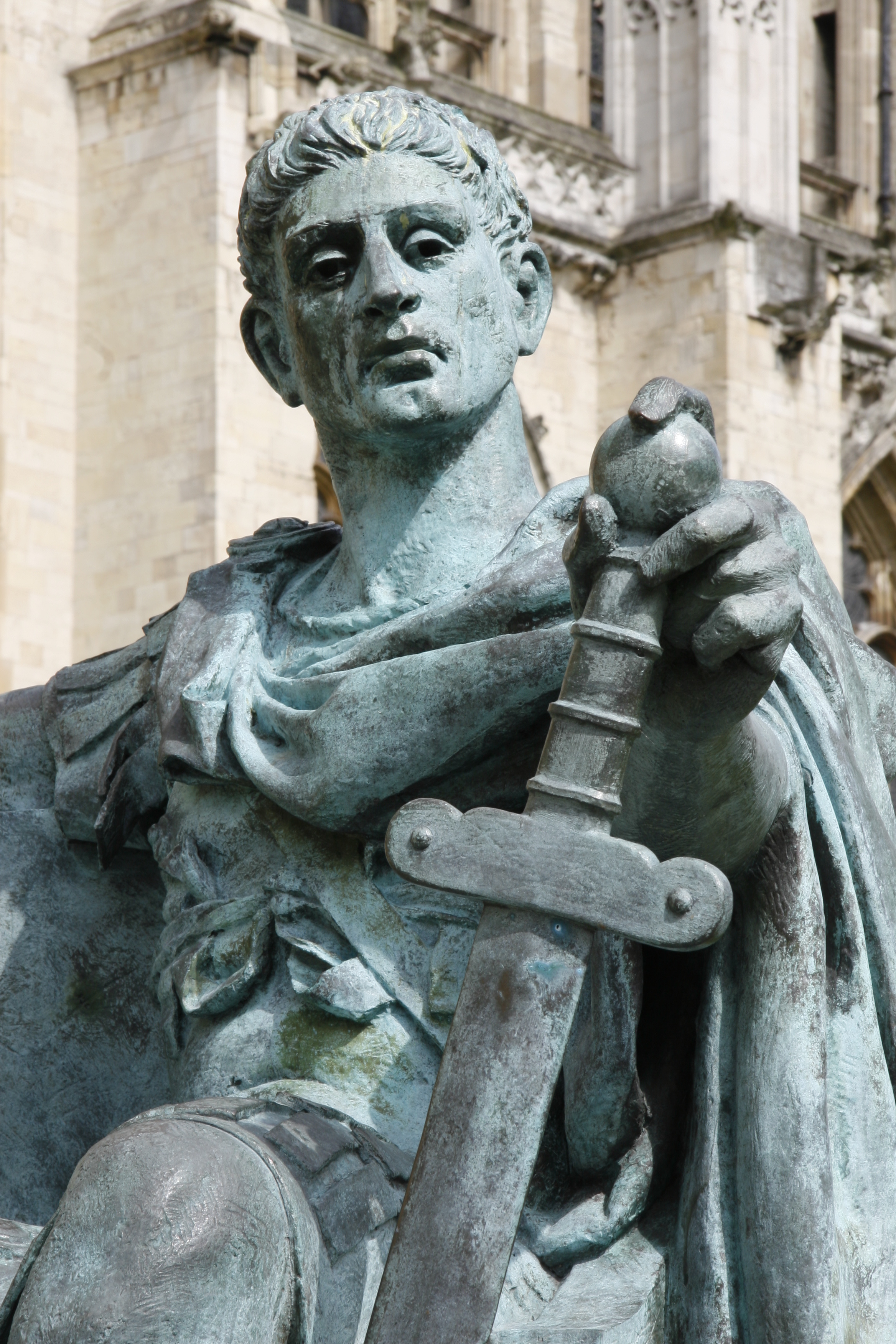 The characteristics of the church of Pergamos greatly resemble the characteristics of the period just following the great persecution period. Because of the Jewish revolts at this time, the Romans were persecuting all those who “acted” Jewish. This involved the Christians because they were reading and teaching from a “Jewish” book and worshipping upon “Jewish” holy days and Sabbaths. When the pagan-Roman Emperor, Constantine, took the seat of authority, he claimed he had a dream of a cross and because of this cross he was convicted to Christianity. Not only did Constantine stop the persecutions by legalizing Christianity, but we have previously seen that he also compromised the teachings of Christianity with paganism.
The characteristics of the church of Pergamos greatly resemble the characteristics of the period just following the great persecution period. Because of the Jewish revolts at this time, the Romans were persecuting all those who “acted” Jewish. This involved the Christians because they were reading and teaching from a “Jewish” book and worshipping upon “Jewish” holy days and Sabbaths. When the pagan-Roman Emperor, Constantine, took the seat of authority, he claimed he had a dream of a cross and because of this cross he was convicted to Christianity. Not only did Constantine stop the persecutions by legalizing Christianity, but we have previously seen that he also compromised the teachings of Christianity with paganism.
In his book, History of the Christian Church, historian Philip Schaff comments on the strength of Christianity’s power in that it had “reformed society from the bottom, and built upwards until it reached the middle and higher classes, and at last the emperor himself” (vol. 1, p. 449), however, “The Roman state ... could not be transformed by a magical stroke. The Christianizing of the state amounted therefore in great measure to a paganizing and secularizing of the church. The world overcame the church, as much as the church overcame the world.” (Ibid., vol. 3. p. 93).
Thus, in the beginning of the fourth century, Christianity began a major downfall. Paul warned that before Jesus’ second coming “and our gathering together unto Him” there would be a “falling away” that would come first and “the man of sin” would be revealed (2 Thessalonians 2:1-3). We are noticing by studying the seven churches that there indeed was a “falling away.”
Thus this time period is known as the “Era of Compromise.” It roughly lasted from 313 A.D. to 538 A.D. when the bishops of Rome began to fully “elevate” themselves.
The Church of Thyatira
“And unto the angel (minister/leader) of the church in Thyatira write; These things saith the Son of God, who hath His eyes like unto a flame of fire, and His feet are like fine brass (bronze); I know thy works, and charity, and service, and faith, and thy patience, and thy works; and the last to be more than the first. Notwithstanding I have a few things against thee, because thou sufferest that woman Jezebel, which calleth herself a prophetess, to teach and to seduce My servants to commit fornication, and to eat things sacrificed unto idols. And I gave her space to repent of her fornication; and she repented not. Behold, I will cast her into a bed, and them that commit adultery with her into great tribulation, except they repent of their deeds. And I will kill her children with death; and all the churches shall know that I am He which searcheth the reins and hearts: and I will give unto every one of you according to your works. But unto you I say, and unto the rest in Thyatira, as many as have not this doctrine, and which have not known the depths of Satan, as they speak; I will put upon you none other burden. But that which ye have already hold fast till I come. And he that overcometh, and keepeth My works unto the end, to him will I give power over the nations: And he shall rule them with a rod of iron; as the vessels of a potter shall they be broken to shivers: even as I received of My Father. And I will give him the morning star. He that hath an ear, let him hear what the Spirit saith unto the churches.” (Revelation 2:18-29)
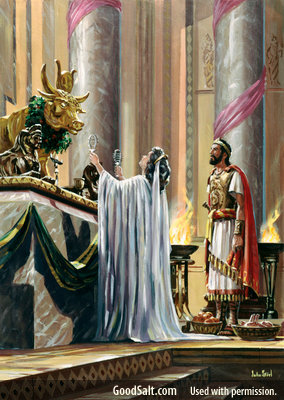 The fourth church that John is to write to is the church of Thyatira. The word Thyatira means “To Wear Away.” The focus of this letter is to warn the true followers of Christ about “that woman Jezebel, which calleth herself a prophetess” (verse 20). Jezebel was the daughter of Ethbaal who married the Israelite king Ahab. Notice the last part of her father’s name - “baal.” Baal is the Assyrian name for the sun-god. As a result of a pagan princes marrying an Israelite king, Ahab “went and served Baal, and worshipped him. And he reared up an altar for Baal in the house of Baal, which he had built in Samaria. And Ahab made a grove; and Ahab did more to provoke the LORD God of Israel to anger than all the kings of Israel that were before him.” (1 Kings 16:31-33). Thus, it was Jezebel who introduced the pagan practice of sun-worship to the Israelites. Soon after this the whole nation of Israel went into idolatry. Here’s how the Remedy Bible paraphrases and accurately expands Revelation 2:20:
The fourth church that John is to write to is the church of Thyatira. The word Thyatira means “To Wear Away.” The focus of this letter is to warn the true followers of Christ about “that woman Jezebel, which calleth herself a prophetess” (verse 20). Jezebel was the daughter of Ethbaal who married the Israelite king Ahab. Notice the last part of her father’s name - “baal.” Baal is the Assyrian name for the sun-god. As a result of a pagan princes marrying an Israelite king, Ahab “went and served Baal, and worshipped him. And he reared up an altar for Baal in the house of Baal, which he had built in Samaria. And Ahab made a grove; and Ahab did more to provoke the LORD God of Israel to anger than all the kings of Israel that were before him.” (1 Kings 16:31-33). Thus, it was Jezebel who introduced the pagan practice of sun-worship to the Israelites. Soon after this the whole nation of Israel went into idolatry. Here’s how the Remedy Bible paraphrases and accurately expands Revelation 2:20:
“Yet I have diagnosed this problem: You have accepted the teachings of Jezebel, which make me look like Baal–a being who imposes law, inflicts torture, and must be appeased. Her teachings mislead people into internalizing pagan ideas about God–including God being like Baal and requiring bloody payments–and thus committing spiritual adultery by giving their hearts to a false god.”
This piece of history was an example of what would happen after the church accepted pagan doctrines. Jesus gives a strong warning to this church if they refused to repent. He warned, “I will kill her children with death; and all the churches shall know that I am He which searcheth the reins and hearts: and I will give unto every one of you according to your works.” (Verse 23). This is rather strong for those people who may not understand what Jesus is really saying. After all, isn’t it God who said, “Thou shalt not kill” (Exodus 20:13)? What does Jesus mean when He said He would kill her children?
Well, remember Jesus is prophetically speaking to “Jezebel.” In the book of Revelation Jezebel is represented symbolically. She represents the infiltration of pagan traditions into the Christian church. She represents a corrupt church system which would enforce her beliefs. Remember, we have learned from previous studies that in Bible prophecy a woman represents some type of church system. Let’s do a quick review here.
Throughout the entire Bible God has shown the characteristics of His people (his church) by using the figure of a pure woman. In Jeremiah 6:2 God says, “I have likened the daughter of Zion to a lovely and delicate woman.” David wrote: “Beautiful for situation, the joy of the whole earth, is mount Zion, on the sides of the north, the city of the great King.” (Psalm 48:2). Zion is often called God’s holy mountain (see, Joel 3:17; Zechariah 8:3). You might remember from our study on the Church of Pergamos that Satan proclaimed: “I will sit also upon the mount of the congregation, in the sides of the north” (Isaiah 14:13). Zion, God’s holy mountain, the mount of the congregation, is a representation of God’s people. In Isaiah 51:16 God says, “... And say unto Zion, Thou art My people.” So, we can see that Satan wants to sit and rule among God’s people.
Paul also continues comparing God’s people to a pure woman in his letter to the Corinthians: “For I am jealous over you with godly jealousy: for I have espoused you to one husband, that I may present you as a chaste virgin to Christ.” (2 Corinthians 11:2). And the prophet John wrote:
“Let us be glad and rejoice, and give honour to Him: for the marriage of the Lamb (Jesus) is come, and His wife hath made herself ready. And to her was granted that she should be arrayed in fine linen, clean and white: for the fine linen is the righteousness of saints.” (Revelation 19: 7, 8)
In the Bible, God’s church is represented as a pure virgin bride to be married to Jesus. She is the New Jerusalem:
“And I saw a new heaven and a new earth: for the first heaven and the first earth were passed away; and there was no more sea. And I John saw the holy city, new Jerusalem, coming down from God out of heaven, prepared as a bride adorned for her husband.” (Revelation 21:1, 2)
There is also a prophecy in the 12th chapter that shows the pure woman. In this chapter we are shown the trials and characteristics of God’s church from the time of Christ to the end of time. (We’ll discuss more of this later).
 A corrupt or harlot woman represents a corrupt religious body who commits spiritual adultery against Jesus. In Hosea 1:2 God says, “… the land hath committed great whoredom, departing from the LORD.” In the 17th chapter of the Book of Revelation John sees a “great whore (harlot) that sitteth upon many waters” (verse 1). This harlot is given the name “MYSTERY, BABYLON THE GREAT, THE MOTHER OF HARLOTS AND ABOMINATIONS OF THE EARTH” (verse 5). Since this harlot is “the mother of harlots” we can conclude that she has children. These children help spread the “abominations of the earth.” Most members of the Catholic Church refer to their church as “Holy Mother Church” and Protestants are referred to as wayward “children” whom their mother is calling home. These “children” therefore represent other corrupt church systems that have compromised and accepted what the “Mother Church” has handed down to them. It is these “children” (teachings) that Jesus will kill (destroy). He is very saddened that pagan traditions are confusing His people.
A corrupt or harlot woman represents a corrupt religious body who commits spiritual adultery against Jesus. In Hosea 1:2 God says, “… the land hath committed great whoredom, departing from the LORD.” In the 17th chapter of the Book of Revelation John sees a “great whore (harlot) that sitteth upon many waters” (verse 1). This harlot is given the name “MYSTERY, BABYLON THE GREAT, THE MOTHER OF HARLOTS AND ABOMINATIONS OF THE EARTH” (verse 5). Since this harlot is “the mother of harlots” we can conclude that she has children. These children help spread the “abominations of the earth.” Most members of the Catholic Church refer to their church as “Holy Mother Church” and Protestants are referred to as wayward “children” whom their mother is calling home. These “children” therefore represent other corrupt church systems that have compromised and accepted what the “Mother Church” has handed down to them. It is these “children” (teachings) that Jesus will kill (destroy). He is very saddened that pagan traditions are confusing His people.
How will Christ kill or destroy these corrupt “churches” (teachings)? By shining the light of truth into the hearts of His people and “give unto every one of you according to your works.” Will you heed the call from God: “come out of her My people” (Revelation 18:4)? Or will you remain and reap the inherent suffering that comes from operating outside of God’s design for life? All the confusion and corruption will be destroyed by the truth.
It is also interesting that this harlot is sitting on that “scarlet coloured beast, full of names of blasphemy, having seven heads and ten horns” (revelation 17:3) that we have talked about in previous studies. This “Mother of harlots” is sitting upon Rome and represents the Roman Papacy.
The Roman emperors were greatly involved in sun-worship. When the leaders of Rome took control of the church they held onto their sun-worshiping practices. Along with this, came multiple doctrines adopted from paganism. For examples:
- In 222 A.D. the Church of Rome invents the doctrine of the Trinity, of which doctrine The Handbook for Today’s Catholic says, “The mystery of the trinity is the central doctrine of the Catholic faith. Upon it are based all the other teachings of the church.” (p. 11).
- In 431 A.D. the title for Mary as being the “Mother of God” was first established at the Council of Ephesus. This is clearly adopted from paganism. This is a Christianized version of the worship of Semiramis - the mother of the sun-god Tammuz whom Ezekiel talks about in chapter 8:14.
- In 600 A.D. the teaching of praying directly to Mary, dead saints and to angels was established.
- In 607 A.D. the title of the pope “Bishop of the Universe” was given to Boniface III by the Emperor Phocas.
- In 786 A.D. the worship of the cross, images and relics was authorized. This, of course, is directly against the Second Commandment which seems to be missing from most modern Catholic Catechisms (Exodus 20:4-6).
In the midst of all this the church did something that would change Christianity and mark herself as head of all churches:
“The Church is above the Bible; and this transference of Sabbath observance from Saturday to Sunday is proof positive of that fact.” (The Catholic Record, Sept. 1, 1923)
“Of course the Catholic church claims that the change [from Saturday to Sunday] was her act. And the act is the mark of her ecclesiastical power and authority in religious matters.” - (C.F. Thomas, Chancellor of Cardinal Gibbons, Faith of Our Fathers, p, 14)
How much more is God dishonored when other church bodies follow in the same footsteps, accepting the change and become her children?
“It is well to remind the Presbyterians, Baptists, Methodists, and all other Christians, that the Bible does not support them anywhere in their observance of Sunday. Sunday is an institution of the Roman Catholic Church, and those who observe the day observe a commandment of the Catholic Church.” (Priest Brady, in an address, reported in the Elizabeth, N.J. “News” of March 18, 1903)
“Protestants ... accept Sunday rather than Saturday as the day for public worship after the Catholic Church made the change ... But the Protestant mind does not realize that ... on observing the Sunday, they are accepting the authority of the spokesman for the church, the Pope.” (Our Sunday Visitor, February 5, 1950)
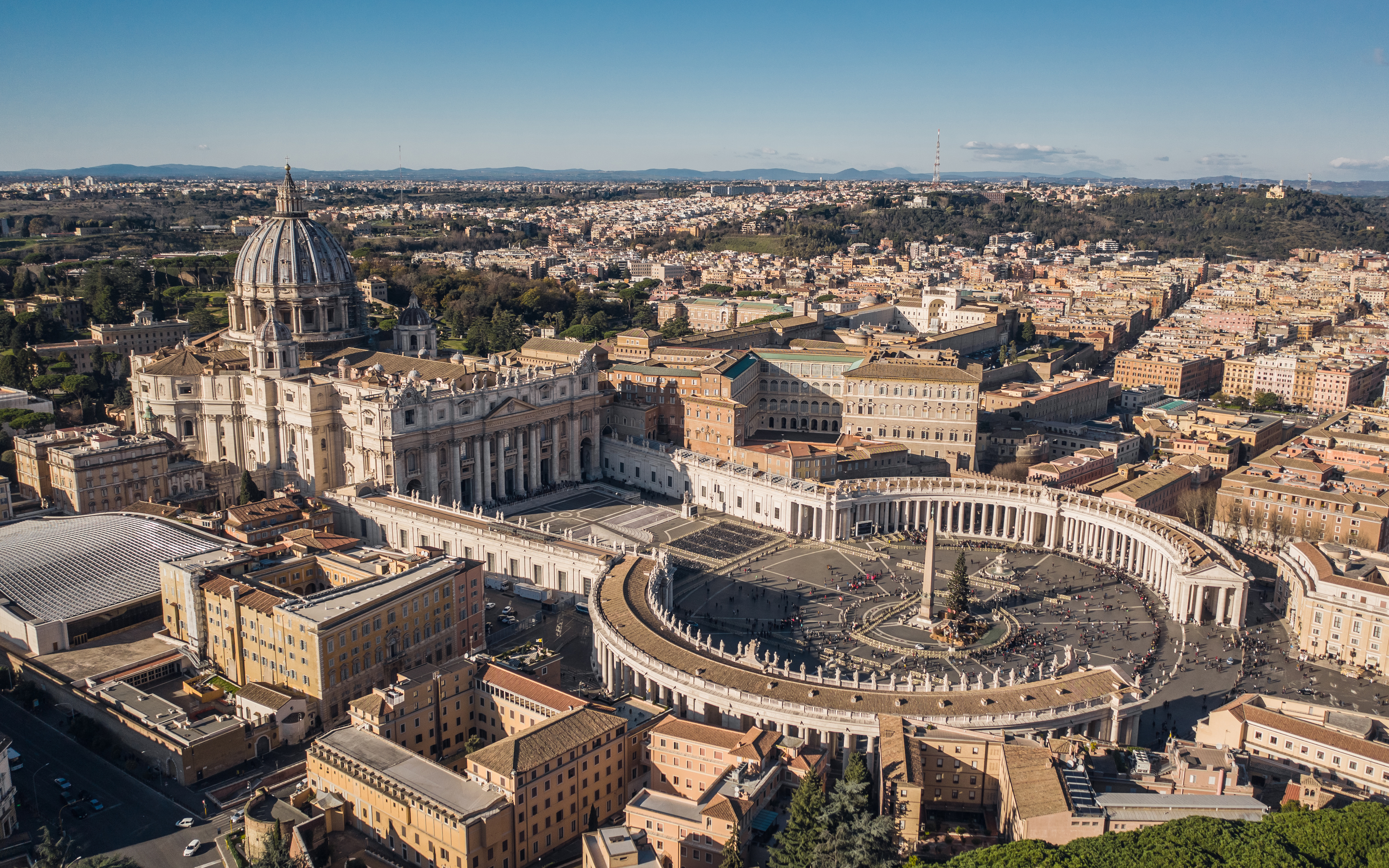 The “falling away” described by Paul in 2 Thessalonians could not get any deeper than this. He says that this “falling away” would reveal “the son of perdition.” Could this be why Jesus addresses this church as “the Son of God, who hath His eyes like unto a flame of fire, and His feet are like fine brass (bronze)”? Is the Son of God addressing the son of perdition? There’s only one other place where the phrase “son of perdition” is used in the Bible, and it is used for Judas, who was an original disciple of Christ, but betrayed Him (John 17:12). He became a wolf in sheep’s clothing (Matthew 7:15) believing he was doing God’s work. Jesus warned His people: “… yea, the time cometh, that whosoever killeth you will think that he doeth God service.” (John 16:2).
The “falling away” described by Paul in 2 Thessalonians could not get any deeper than this. He says that this “falling away” would reveal “the son of perdition.” Could this be why Jesus addresses this church as “the Son of God, who hath His eyes like unto a flame of fire, and His feet are like fine brass (bronze)”? Is the Son of God addressing the son of perdition? There’s only one other place where the phrase “son of perdition” is used in the Bible, and it is used for Judas, who was an original disciple of Christ, but betrayed Him (John 17:12). He became a wolf in sheep’s clothing (Matthew 7:15) believing he was doing God’s work. Jesus warned His people: “… yea, the time cometh, that whosoever killeth you will think that he doeth God service.” (John 16:2).
Thus, the church of Thyatira represents the time period just following the Era of Compromise when the Church of Rome began to enforce her beliefs onto mankind with death decrees. It is estimated that over 50,000,000 people were put to death by the Church of Rome during the years called “The Middle Ages” or “Dark Ages.” In a previous study we learned that the Roman papacy rose to dominance in the year 538 A.D. after finishing off the uprooting of the three Arian powers who denied the Trinity and believed Jesus is literally “the Son of God” who was begotten (though uncreated) in the days of eternity.
This time period of the Church of Thyatira roughly lasted from 538 A.D. - 1517 A.D. when the light of the great Protestant reformation was at hand and caused her “deadly wound” in 1798 A.D, thus bringing to an end her 1,260 year rule as the prophet Daniel foretold (Daniel 7:25).
The Church of Sardis
“And unto the angel (minister/leader) of the church in Sardis write; These things saith He that hath the seven Spirits of God, and the seven stars; I know thy works, that thou hast a name that thou livest, and art dead. Be watchful, and strengthen the things which remain, that are ready to die: for I have not found thy works perfect before God. Remember therefore how thou hast received and heard, and hold fast, and repent. If therefore thou shalt not watch, I will come on thee as a thief, and thou shalt not know what hour I will come upon thee. Thou hast a few names even in Sardis which have not defiled their garments; and they shall walk with Me in white: for they are worthy. He that overcometh, the same shall be clothed in white raiment; and I will not blot out his name out of the book of life, but I will confess his name before My Father, and before His angels. He that hath an ear, let him hear what the Spirit saith unto the churches.” (Revelation 3:1-6)
 The fifth church John is to write to is the church of Sardis. The word Sardis means “That Which Remains.” Jesus tells this church that there are only a few that have “not defiled their garments” (verse 4). This means they are true followers of God. Jesus said that “He that overcometh, the same shall be clothed in white raiment (garments).” (Verse 5). What are these people overcoming? Even though the Church of Rome was enforcing their compromised traditions, a few people continued to protest against it. As a result the Protestant Reformation took place soon after Martin Luther, a devout Catholic, nailed his 95 Theses on the door of the Castle Church in Wittenberg on October 31, 1517 A.D. He did this, not in an act of defiance, but as a plea to reform his beloved church. The main point of his Theses was the sale of Indulgences:
The fifth church John is to write to is the church of Sardis. The word Sardis means “That Which Remains.” Jesus tells this church that there are only a few that have “not defiled their garments” (verse 4). This means they are true followers of God. Jesus said that “He that overcometh, the same shall be clothed in white raiment (garments).” (Verse 5). What are these people overcoming? Even though the Church of Rome was enforcing their compromised traditions, a few people continued to protest against it. As a result the Protestant Reformation took place soon after Martin Luther, a devout Catholic, nailed his 95 Theses on the door of the Castle Church in Wittenberg on October 31, 1517 A.D. He did this, not in an act of defiance, but as a plea to reform his beloved church. The main point of his Theses was the sale of Indulgences:
“One of the scandalous practices of the Catholic church was the sale of ‘indulgences’ to raise money. Indulgences allowed Catholics to buy forgiveness for their sins with cold, hard cash. Most remember that indulgences were one of the primary reasons Martin Luther made the cataclysmic decision to leave the Catholic church and start the ‘Protestant’ movement. However, few realize that indulgences were used by the Catholic church as a primary source of revenue for over a thousand years, and that the practice did not end as a result of Luther's protests.” (delanceyplace.com)
As a result of his Theses Martin Luther was greatly persecuted by the church of Rome. Over time Luther came to this conclusion: “... Already I feel greater liberty in my heart; for at last I know that the pope is antichrist, and that his doctrine is that of Satan himself.” (-D’ Aubigne, b. 6, ch. 9). He also wrote:
“This teaching [of the supremacy of the pope] shows forcefully that the Pope is the very Antichrist, who has exalted himself above, and opposed himself against Christ, because he will not permit Christians to be saved without his power, which, nevertheless, is nothing, and is neither ordained nor commanded by God. This is, properly speaking, to exalt himself above all that is called God … The Pope, however, prohibits this faith, saying that to be saved a person must obey him.” (Smalcald Articles, II, IV, 10-12)
Jesus counsels this church to “Strengthen the things that remain, that are ready to die” (verse 2). Through the long compromise with paganism many biblical truths were distorted, however, some truths remained, and these reformers were to strengthen these truths before they slipped away, making a path for those who would be called “the repairers of the breach”:
“And they that shall be of thee shall build the old waste places: thou shalt raise up the foundations of many generations; and thou shalt be called, The repairer of the breach, The restorer of paths to dwell in.” (Isaiah 58:12)
Thus, this period is known as the “Era of Reformation” and roughly lasted from 1517 A.D. to 1755 A.D. which would ignite a great awakening. Earlier we referred to the woman in Revelation chapter 12 as she was “given two wings of a great eagle, that she might fly into the wilderness, into her place, where she is nourished for a time, and times, and half a time, from the face of the serpent.” (Revelation 12:14). This we have seen describes God’s people going “underground” to escape from the papacy’s tyrannical rule for 1,260 days/years. In verse 16 we read: “And the earth helped the woman, and the earth opened her mouth, and swallowed up the flood which the dragon cast out of his mouth.” What is this “earth” that helped the woman (God’s church)?
In Revelation 13 we read again about the ten-horned beast which represents the Roman papacy. In verse 10 it says, “He that leadeth into captivity shall go into captivity: he that killeth with the sword must be killed with the sword. Here is the patience and the faith of the saints.” This is describing the deadly wound that she received in 1798. Now notice what happens next:
“And I beheld another beast coming up out of the earth; and he had two horns like a lamb, and he spake as a dragon. And he exerciseth all the power of the first beast before him, and causeth the earth and them which dwell therein to worship the first beast, whose deadly wound was healed.” (Revelation 13:11, 12)
Here we see another beast rising into power around the time the papacy received its deadly wound in 1798. After applying the first beast of Revelation 13 to the papacy, John Wesley made this comment concerning the second beast of the same chapter in the year 1754:
“Another … beast [world power] … But he is not yet come, though he cannot be far off [from the year 1754]; for he is to appear at the end of the forty-two months of the first beast.” (New Testament with Explanatory Notes, p. 427).
Remember, a beast in Bible prophecy represents a kingdom or nation. This beast (kingdom) is seen coming up “out of the earth.” Could it be this kingdom who helps the woman (God church) escape from papal tyranny? Well let’s think for a moment. What kingdom was rising about the same time the papal power received its deadly wound in 1798 which helped God’s people escape the persecutions from Papal Rome?
Keep in mind that water, or the sea in Bible prophecy represents a populated area. Referring to the harlot woman, an angel tells John, “The waters which thou sawest, where the whore sitteth, are peoples, and multitudes, and nations, and tongues.” (Revelation 17:15)
The first beast in Revelation 13 rises from the sea (Revelation 13:1), representing that it rose from among a well populated area most-likely by force, or in other words, a revolution. When Daniel describes this beast he says, “the four winds of the heaven strove upon the great sea. And four great beasts came up from the sea, diverse one from another.” (Daniel 7:2,3). Not only did Daniel see water, but he also witnessed “winds.” Wind, in Bible prophecy represents war or strife (see, Isaiah 24:24). This second beast in Revelation 13, however, rises from the earth. There is no sea (mass population) or winds (war, strife). This means that it must have risen from among a not-so-well populated area, and not from a revolution. Or in other words, it was settled— A kingdom that was settled and was rising around the year 1798 and where God’s people came to dwell.
 It must be the United States of America! It was a kingdom that was settled and gained its independence in the year 1776, its Constitution ratified in 1788 and George Washington became its first president in 1789. In 1791 the Bill of Rights was ratified when 10 out of the 12 amendments became part of the U.S. Constitution. And it was also the place where God’s people came to escape religious persecution and set up freedom of religion.
It must be the United States of America! It was a kingdom that was settled and gained its independence in the year 1776, its Constitution ratified in 1788 and George Washington became its first president in 1789. In 1791 the Bill of Rights was ratified when 10 out of the 12 amendments became part of the U.S. Constitution. And it was also the place where God’s people came to escape religious persecution and set up freedom of religion.
The word here rendered "coming up" from "out of the earth" literally signifies to "grow or spring up as a plant." A prominent writer, describing the rise of the United States, speaks of "the mystery of her coming forth from vacancy," and says, "Like a silent seed we grew into an empire." (Townsend, The New World Order Compared With the Old, p. 462.) A European journal in 1850 spoke of the United States as a wonderful empire, which was "emerging," and "amid the silence of the earth daily adding to its power and pride" (The Dublin Nation).
Remember, horns on beasts in Bible prophecy represent powers. The first beast of Revelation 13 had ten horns which had crowns on them (verse 1). This second beast has two horns, but without crowns. John says it “had two horns like a lamb.” Referring to these “two horns” on page 55 of his book, Facts for the Times, Merritt E. Cornell (1827-1893) quotes Jon J.A. Bingham saying, “I can tell you that they (the Puritans) had another and a sublimer object in view; it was to found what the world had not seen for ages — A Church without a pope, and a State without a king.” Total separation of religion and the state was one of the fundamental principles in the establishment of the United States and this was the only nation on the earth at that time, or in all history since the book of Revelation was written. However, John gives the sad report that, although the United States appears to be as a gentle “lamb” (a symbol representing Christ/pure Christianity), it would speak like a “dragon” (a symbol of Satan/imposing law, force and coercion) but more on that in another study.
The Church of Philadelphia
“And to the angel (minister/leader) of the church in Philadelphia write; These things saith He that is holy, He that is true, He that hath the key of David, He that openeth, and no man shutteth; and shutteth, and no man openeth; I know thy works: behold, I have set before thee an open door, and no man can shut it: for thou hast a little strength, and hast kept My word, and hast not denied My name. Behold, I will make them of the synagogue of Satan, which say they are Jews, and are not, but do lie; behold, I will make them to come and worship before thy feet, and to know that I have loved thee. Because thou hast kept the word of My patience, I also will keep thee from the hour of temptation, which shall come upon all the world, to try them that dwell upon the earth. Behold, I come quickly: hold that fast which thou hast, that no man take thy crown. Him that overcometh will I make a pillar in the temple of My God, and he shall go no more out: and I will write upon him the name of My God, and the name of the city of My God, which is new Jerusalem, which cometh down out of heaven from My God: and I will write upon him My new name. He that hath an ear, let him hear what the Spirit saith unto the churches.” (Revelation 3:7-13)
The name Philadelphia means “Brotherly Love.” Notice that Jesus gives no reproof to this church. What this church is doing, although not perfect, is joyful in the sight of God. Jesus commends this church for keeping His word and not denying His name. Remember, the word name here denotes “character.” These people praised God’s character and desired to be transformed into that same image by the indwelling Spirit (2 Corinthians 3:18). Jesus said, “I will write upon him the name of My God”, which echoes Revelation 14:1 which says, “And I looked, and, lo, a Lamb (Jesus) stood on the mount Zion, and with Him an hundred forty and four thousand, having His Father's name written in their foreheads.”
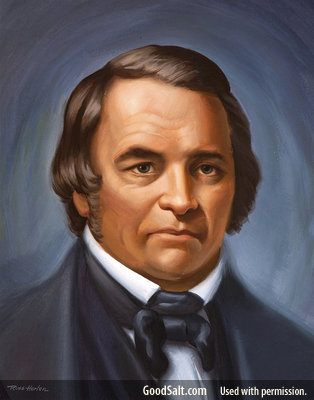 These were sincere Christians who delightfully dug into the word of God for more light. The church of Philadelphia greatly resembles the time period just following the early Reformation period. People such as the Wesley brothers and George Whitefield, who called for a return to true godliness. This time period is known today as the “Great Awakening.” During this time great revivals were shooting across America. Probably the most famous revival was led by a Baptist minister named William Miller (1782 – 1849). Miller was known for his studies on the prophecies of Daniel and Revelation. His studies soon became centered on Daniel 8:14 and the cleansing of the sanctuary. This is no surprise since we have previously learned that the angel Gabriel told Daniel that his prophecies would not be fully understood until “the time of the end” which we have seen began in 1798 A.D. (Daniel 8:17; 12:9).
These were sincere Christians who delightfully dug into the word of God for more light. The church of Philadelphia greatly resembles the time period just following the early Reformation period. People such as the Wesley brothers and George Whitefield, who called for a return to true godliness. This time period is known today as the “Great Awakening.” During this time great revivals were shooting across America. Probably the most famous revival was led by a Baptist minister named William Miller (1782 – 1849). Miller was known for his studies on the prophecies of Daniel and Revelation. His studies soon became centered on Daniel 8:14 and the cleansing of the sanctuary. This is no surprise since we have previously learned that the angel Gabriel told Daniel that his prophecies would not be fully understood until “the time of the end” which we have seen began in 1798 A.D. (Daniel 8:17; 12:9).
In Daniel 8 Gabriel says, “And the vision of the evening and the morning which was told is true: wherefore shut thou up the vision; for it shall be for many days.” (Verse 26). Daniel’s prophecy concerning the “evenings and mornings” (the 2,300 days/years) would be “shut up” or sealed until “the time of the end.” When we read Daniel chapter 12, take particular notice to the description of one individual whom Daniel sees:
“Then I Daniel looked, and, behold, there stood other two, the one on this side of the bank of the river, and the other on that side of the bank of the river. And one said to the man clothed in linen, which was upon the waters of the river, How long shall it be to the end of these wonders? And I heard the man clothed in linen, which was upon the waters of the river, when he held up his right hand and his left hand unto heaven, and sware by him that liveth for ever that it shall be for a time, times, and an half (1,260 days/years); and when he shall have accomplished to scatter the power of the holy people, all these things shall be finished.” (Daniel 12:5-7)
So, not only do we have the time period of when Daniel’s book would be unsealed and understood more, we have this description of this being as “he held up his right hand and his left hand unto heaven, and sware by him that liveth for ever.” Did you know we see all this in the book of Revelation?
“And I saw another mighty angel come down from heaven, clothed with a cloud: and a rainbow was upon his head, and his face was as it were the sun, and his feet as pillars of fire: And he had in his hand a little book open: and he set his right foot upon the sea, and his left foot on the earth … And the angel which I saw stand upon the sea and upon the earth lifted up his hand to heaven, And sware by him that liveth for ever and ever, who created heaven, and the things that therein are, and the earth, and the things that therein are, and the sea, and the things which are therein, that there should be time no longer: But in the days of the voice of the seventh angel, when he shall begin to sound, the mystery of God should be finished, as He hath declared to His servants the prophets. And the voice which I heard from heaven spake unto me again, and said, Go and take the little book which is open in the hand of the angel which standeth upon the sea and upon the earth. And I went unto the angel, and said unto him, Give me the little book. And he said unto me, Take it, and eat it up; and it shall make thy belly bitter, but it shall be in thy mouth sweet as honey. And I took the little book out of the angel's hand, and ate it up; and it was in my mouth sweet as honey: and as soon as I had eaten it, my belly was bitter. And he said unto me, Thou must prophesy again before many peoples, and nations, and tongues, and kings.” (Revelation 10:1, 2, 5-11)
Daniel’s book was sealed, an angel revealed the time of which it would begin to be unsealed, and now we see John received an opened book from the same angel. His phrase “There should be time no longer” connects us to the phrase “the time of the end.” Revelation chapter 10 is describing the time when Daniel’s book would begin to be understood, especially the prophecy concerning the 2,300 days/years. In the vision, John represents those who would be involved in the learning process.
After John receives the open book, he is told to eat it. This represents an intense study of it: “Thy words were found, and I did eat them; and Thy word was unto me the joy and rejoicing of mine heart: for I am called by Thy name, O LORD God of hosts.” (Jeremiah 15:16). After John ate the book, it was in his mouth “sweet as honey.” What these people were learning was bringing them great joy. However, it became bitter in John’s belly. The results of their initial study became a huge disappointment. Did this happen at the time of William Miller?
While studying these prophecies Miller believed that he had learned when Jesus was to return to this earth. Miller believed that the “sanctuary” that was to be cleansed in Daniel 8:14 represented the earth, and after this time period of 2,300 days/years, Jesus was going to return to this earth and cleanse it with fire. Just like in our previous studies of Daniel chapter 8, Miller rightfully learned that Daniel chapters 8 and 9 are linked together and the 2,300 years were connected to the 70 weeks (490 years). Thus, Miller believed that Jesus was going to return in the Fall of 1844.
In fact, unbeknownst to Miller, these conclusions were also being taught in other parts of the world at this time! Joseph Wolfe began to proclaim this message in 1821 in Germany. His conclusions were a few years different than that of Miller’s. The Arabs of Yemen were proclaiming that great events were to take place in the year 1840. A Tater Priest was proclaiming that Jesus would return in 1844. In 1826 seven hundred England ministers were proclaiming the soon return of Jesus. As far back as the 1700’s the teaching of Jesus’ soon return was being proclaimed by a Lutheran named Bengal. His conclusions were also a few years apart from Miller’s. There were many others as well. Truly this was a time period of a great awakening.
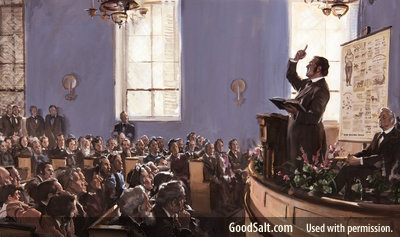 Miller’s ideas spread throughout the lands like wildfire. Many people from many denominations came to hear him preach. As a result, many were converted to his ideas and, since the message was sweet in their mouths, they began teaching it themselves. As time went on those who refused to accept Miller’s conclusions began to label him and his followers as Millerites or Adventists. The word “advent” simply means “coming” or “arrival”, an “Adventist” therefore is someone who focuses on the prophecies concerning the second coming of Jesus and is linked to the teachings of this 2,300-day prophecy.
Miller’s ideas spread throughout the lands like wildfire. Many people from many denominations came to hear him preach. As a result, many were converted to his ideas and, since the message was sweet in their mouths, they began teaching it themselves. As time went on those who refused to accept Miller’s conclusions began to label him and his followers as Millerites or Adventists. The word “advent” simply means “coming” or “arrival”, an “Adventist” therefore is someone who focuses on the prophecies concerning the second coming of Jesus and is linked to the teachings of this 2,300-day prophecy.
As you obviously know, these Adventists were wrong in their belief that Jesus was to return in 1844. The days that followed were called “The Great Disappointment”; for it was bitter in their bellies. After the date had come and gone, most of the Adventists, including Miller, threw away all that they had heard and believed. However, some remained and tried to make sense of it all. They reasoned repeatedly. They checked and rechecked the prophecies. They concluded that the dates were right, but they could not figure out what they meant. Soon, they followed in the sequence given by John at the end of Revelation 10 where the angel says, “Thou must prophesy again before many peoples, and nations, and tongues, and kings.” (Revelation 10:11). These words were encouraging to those who suffered through the disappointment, but what were they missing? How could they prophesy again without understanding? The answer comes in the very next chapter:
“And there was given me a reed like unto a rod: and the angel stood, saying, Rise, and measure the temple of God, and the altar, and them that worship therein. But the court which is without the temple leave out, and measure it not; for it is given unto the Gentiles: and the holy city shall they tread under foot forty and two months.” (Revelation 11:1, 2)
These Adventists were encouraged to “measure the temple of God.” Since the dates were correct, then it must be their understanding of the cleansing of the sanctuary. They soon learned that it was referring the heavenly sanctuary and not the earthly. Thus, these Adventists who remained, began to believe and preach that, instead of Daniel 8:14 pointing to the Second Coming, it was actually pointing to the time that Jesus, our High Priest, stepped into the Holy of Holies of the heavenly sanctuary to perform a work of cleansing which we have previously learned is connected to a time of judgment which began in the Fall of 1844 A.D. No wonder that Jesus speaks to this church as the One who “openeth, and no man shutteth; and shutteth, and no man openeth; I know thy works: behold, I have set before thee an open door, and no man can shut it.” Jesus has opened the door of the Holy of Holies. Will you let Him in?
In Revelation 10:7 the angel tells John, “But in the days of the voice of the seventh angel, when he shall begin to sound, the mystery of God should be finished, as He hath declared to his servants the prophets.” The seventh angel refers to the angel who blows the seventh trumpet. These seven trumpets are referred to throughout Revelation chapters 8 and 9, however, the seventh angel blows his trumpet in Revelation 11 after John is told to measure the temple. The angel says at this time “the mystery of God should be finished.” Everything concerning God’s true character would be made known and all the lies Satan has perpetrated would be cleansed from our soul-temples. At this time John hears the seventh trumpet blow and then hears twenty-four elders say that it is “the time of the dead, that they should be judged”, then immediately sees “the temple of God was opened in heaven, and the Ark of His Covenant was seen in His temple” (Revelation 11:18, 19). Please see the studies on Daniel 8 and 9 for more details on this.
The Church of Laodicea
“And unto the angel (minister/leader) of the church of the Laodiceans write; These things saith the Amen, the faithful and true witness, the beginning of the creation of God; I know thy works, that thou art neither cold nor hot: I would thou wert cold or hot. So then because thou art lukewarm, and neither cold nor hot, I will spue thee out of My mouth. Because thou sayest, I am rich, and increased with goods, and have need of nothing; and knowest not that thou art wretched, and miserable, and poor, and blind, and naked: I counsel thee to buy of Me gold tried in the fire, that thou mayest be rich; and white raiment, that thou mayest be clothed, and that the shame of thy nakedness do not appear; and anoint thine eyes with eyesalve, that thou mayest see. As many as I love, I rebuke and chasten: be zealous therefore, and repent. Behold, I stand at the door, and knock: if any man hear My voice, and open the door, I will come in to him, and will sup with him, and he with Me. To him that overcometh will I grant to sit with Me in my throne, even as I also overcame, and am set down with My Father in His throne. He that hath an ear, let him hear what the Spirit saith unto the churches.” (Revelation 3:14-22)
The seventh and final church John is to write to is Laodicea. The word Laodicea means “A People Judged.” The name gives the connotation of being “judged and found wanting.” It is of no coincidence that during the time of the “Great Awakening” (represented by the church of Philadelphia) they began to proclaim that a time of judgment began in 1844, and now we see that the church of Laodicea represents the time period of that judgment.
In the letter to the church in Sardis Jesus commended them for not defiling their garments. In the letter to the church in Philadelphia Jesus gives no reproof thus signifying that some people still have not defiled their garments. In this final letter to the church in Laodicea, Jesus prescribes to them His “white raiment, that thou mayest be clothed” (verse 18). Apparently many people in this time period have lost their garments and their selfishness is exposed. In fact, Jesus’ diagnosis (judgment) of these people is that they are “lukewarm” (verse 16).
The whole process of the judgment is diagnosing our sinful condition and prescribing a Remedy. Jesus says, “As many as I love, I rebuke (diagnose) and chasten (prescribe the Remedy).” In this hour of judgment Jesus and His Father have been bringing to our attention our sins, not as a condemnation, but for us to acknowledge our condition and to give Them the allowance to treat us. The first thing Jesus prescribes here is for us to choose to be either cold or hot (verse 15).
 Jesus, our Remedy, says it is unhealthy for us to remain lukewarm. Matthew quotes Jesus as saying, “He that is not with Me is against Me; and he that gathereth not with Me scattereth abroad.” (Matthew 12:30). There is a very thin fence between good and evil. Jesus doesn’t desire anyone to be sitting on the fence. Even though Jesus sees us as being lukewarm, we tend to see ourselves as being “rich, and increased with goods, and have need of nothing” (Revelation 3:17). We have become comfortable, which is why Jesus prefers we are either cold or hot so we can see our need.
Jesus, our Remedy, says it is unhealthy for us to remain lukewarm. Matthew quotes Jesus as saying, “He that is not with Me is against Me; and he that gathereth not with Me scattereth abroad.” (Matthew 12:30). There is a very thin fence between good and evil. Jesus doesn’t desire anyone to be sitting on the fence. Even though Jesus sees us as being lukewarm, we tend to see ourselves as being “rich, and increased with goods, and have need of nothing” (Revelation 3:17). We have become comfortable, which is why Jesus prefers we are either cold or hot so we can see our need.
Many people go to church every week, they sing in the choir or play in the band, they teach classes, and they pray before every meal believing they are on their way to heaven. Most even believe that since they were baptized into the denomination they feel is the “true” church, then they are sealed unto everlasting life. But Jesus says, “Verily, verily, I say unto thee, Except a man be born again, he cannot see the kingdom of God.” (John 3:3). Jesus says without being born again, we cannot even see (or, understand) the kingdom of God. Why is this?
“And when He (Jesus) was demanded of the Pharisees, when the kingdom of God should come, He answered them and said, The kingdom of God cometh not with observation: Neither shall they say, Lo here! or, lo there! for, behold, the kingdom of God is within you.” (Luke 17:20, 21)
The kingdom of God is not a place, but a lifestyle, and unless we are born again, we cannot understand that lifestyle; for it is a lifestyle that is non-violent, forgiving, non-coercive, compassionate, longsuffering, etc.
Jesus isn’t looking for formality, He’s looking for changed lives. It doesn’t matter what level of spirituality we think we have reached, we are always “wretched, and miserable, and poor, and blind, and naked” without the indwelling Spirit (Presence) of Christ (Revelation 3:17). In fact, Jesus doesn’t say that the problem with Laodicea is that we are “wretched, and miserable, and poor, and blind, and naked”, the problem is that we “knowest not” that we are! We must open the door to our hearts on which He is knocking.
Jesus counsels the Laodiceans to get rid of their selfish ways and allow Him to clothe them with His righteousness (His affectionate selfless service of giving) so that they might reflect His character. Jesus prescribes and offers all of us special gifts (medicine) to heal us. He offers us “gold tried in the fire” (verse 18).
“My brethren, count it all joy when you fall into various trials, knowing that the testing of your faith produces patience. But let patience have its perfect work, that you may be perfect and complete, lacking nothing.” (James 1:2-4)
This testing of our faith (gold) will make us spiritually rich (James 2:5) and represents that symbol of faith that develops from a love relationship with our Savior.
“The process by which gold is purified and formed makes it a fitting image for the sanctifying work that occurs in the life of a believer. Refiners carefully melt gold to bring out any impurities, a process that requires high heat and constant tending. The image of God refining believers is first used in the book of Job as Job declared, 'When he test me, I’ll come out as pure as gold' (23:10; Jer 9:7). Following this imagery through to the New Testament, Peter reminded believers that suffering is a testing process: 'The purposes of these troubles is to test your faith as fire test how genuine gold is. Your faith is more precious than gold, and by passing the test, it gives praise, glory, and honor to God. This will happen when Jesus Christ appears again' (1 Pet 1:7). The use of gold refining as an image for sanctification helps us understand the purpose of suffering in our lives and the role of God as he tends the fire and cares for us at each stage of the refining process.” (jesusway4you.com)
Jesus prescribes and offers us “white raiment” which is His own righteousness. Isaiah once wrote, “But we are all as an unclean thing, and all our righteousnesses are as filthy rags; and we all do fade as a leaf; and our iniquities, like the wind, have taken us away.” (Isaiah 64:6). This is why we must have Christ’s “robe of righteousness” that He is offering.
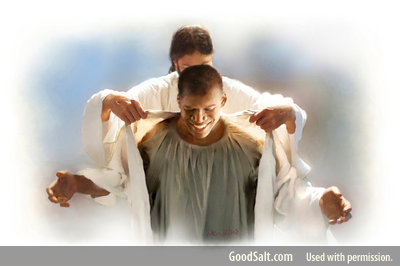 “I will greatly rejoice in the LORD, my soul shall be joyful in my God; for He hath clothed me with the garments of salvation, He hath covered me with the robe of righteousness, as a bridegroom decketh himself with ornaments, and as a bride adorneth herself with her jewels. For as the earth bringeth forth her bud, and as the garden causeth the things that are sown in it to spring forth; so the Lord GOD will cause righteousness and praise to spring forth before all the nations.” (Isaiah 61:10, 11)
“I will greatly rejoice in the LORD, my soul shall be joyful in my God; for He hath clothed me with the garments of salvation, He hath covered me with the robe of righteousness, as a bridegroom decketh himself with ornaments, and as a bride adorneth herself with her jewels. For as the earth bringeth forth her bud, and as the garden causeth the things that are sown in it to spring forth; so the Lord GOD will cause righteousness and praise to spring forth before all the nations.” (Isaiah 61:10, 11)
Jesus also prescribes and offers us “eye salve” for our blindness (Revelation 3:18). This will help us see our sinfulness and our need for a Savior at all times. The Psalmist once wrote, “Open thou mine eyes, that I may behold wondrous things out of thy Law.” (Psalm 119:18), and Job prayed to God asking, “How many are mine iniquities and sins? make me to know my transgression and my sin.” (Job 13:23).
Since the church of Laodicea is the seventh and final church that John writes to, we must conclude that this church represents the church in the last days of earth’s history. However, we must also conclude that there will not be any Laodiceans in heaven. There will not be any lukewarm Christians entering the Kingdom.
Thus the letter to the church of Laodicea is a solemn treatment for you and I to fully accept God’s grace and allow Him to “cleanse us from all unrighteousness” (1 John 1:9). Those who allow God to work out His power in their lives will be numbered among those who “Keep the commandments of God and the faith of Jesus” (Revelation 14:12).
We have seen how Revelation chapter 12:1-5 describes God’s people from the time of the first century, and then being persecuted by the ten-horned dragon (pagan/papal/Rome/Satan). The church then flees into the wilderness to escape this persecution before she is wiped out of existence (6-15). She then finds help from the beast which rises out of the earth (America) where she attempts to set up freedom of religion (verse 16; 13:11). However, Revelation 13:11-18 also describe America as speaking (legislating) like a dragon (Rome/Satan). This calls for patience from God’s people, totally trusting in Him, as a remnant of true believers emerges and all evil forces prepare to destroy us in one final battle between truth and error:
“And the dragon (Satan) was wroth with the woman (God’s people), and went to make war with the remnant of her seed, which keep the commandments of God, and have the testimony of Jesus Christ.” (Revelation 12:17)
A remnant is a small remaining piece of the original that is still useful (such as a remnant piece of a carpet). God will have a pure people upon this earth who, by the grace of God alone, will reflect the original purpose of His church set forth in the Garden of Eden. It is these people who will be God’s final church who will partake of His righteousness and reveal the true character of God before all the universe.
Jesus said, “To him that overcometh will I grant to sit with Me in my throne, even as I also overcame, and am set down with My Father in His throne” (Revelation 3:21). By the grace of God we can and will overcome “even as” or “just like” Jesus overcame. What God did in and through Jesus, He will do again in and through those who have Jesus living in them. Jesus overcame every temptation by faithfully submitting Himself to the grace of God (Luke 2:40). When we accept and possess His unfailing faith, we too will overcome “just as” He did:
“For we do not have a High Priest (Jesus) who cannot sympathize with our weaknesses, but was in all points tempted as we are, yet without sin. Let us therefore come boldly to the throne of grace, that we may obtain mercy and find grace to help in time of need (‘just as’ Jesus did).” (Hebrews 4:15, 16)
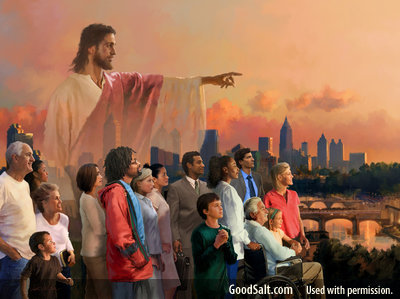 Jesus’ mission was to reveal and vindicate God’s character. The night before His death Jesus prayed to His Father saying, “I have glorified You on the earth. I have finished the work which You have given Me to do.” (John 17:4). This is why Jesus is “the faithful and true witness” (Revelation 3:14). Will you become one too “just as” Jesus is?
Jesus’ mission was to reveal and vindicate God’s character. The night before His death Jesus prayed to His Father saying, “I have glorified You on the earth. I have finished the work which You have given Me to do.” (John 17:4). This is why Jesus is “the faithful and true witness” (Revelation 3:14). Will you become one too “just as” Jesus is?
Remember, during this time of judgment (diagnosis) “the mystery of God should be finished” (Revelation 10:7; 11:18, 19). This mystery will be revealed by God’s church; for we are to “to make all see what is the fellowship of the mystery, which from the beginning of the ages has been hidden in God who created all things through Jesus Christ; to the intent that now the manifold wisdom (character traits) of God might be made known by the church to the principalities and powers in the heavenly places, according to the eternal purpose which He accomplished in Christ Jesus our Lord.” (Ephesians 3:9-11).
Next Study: What Are the Seven Seals?